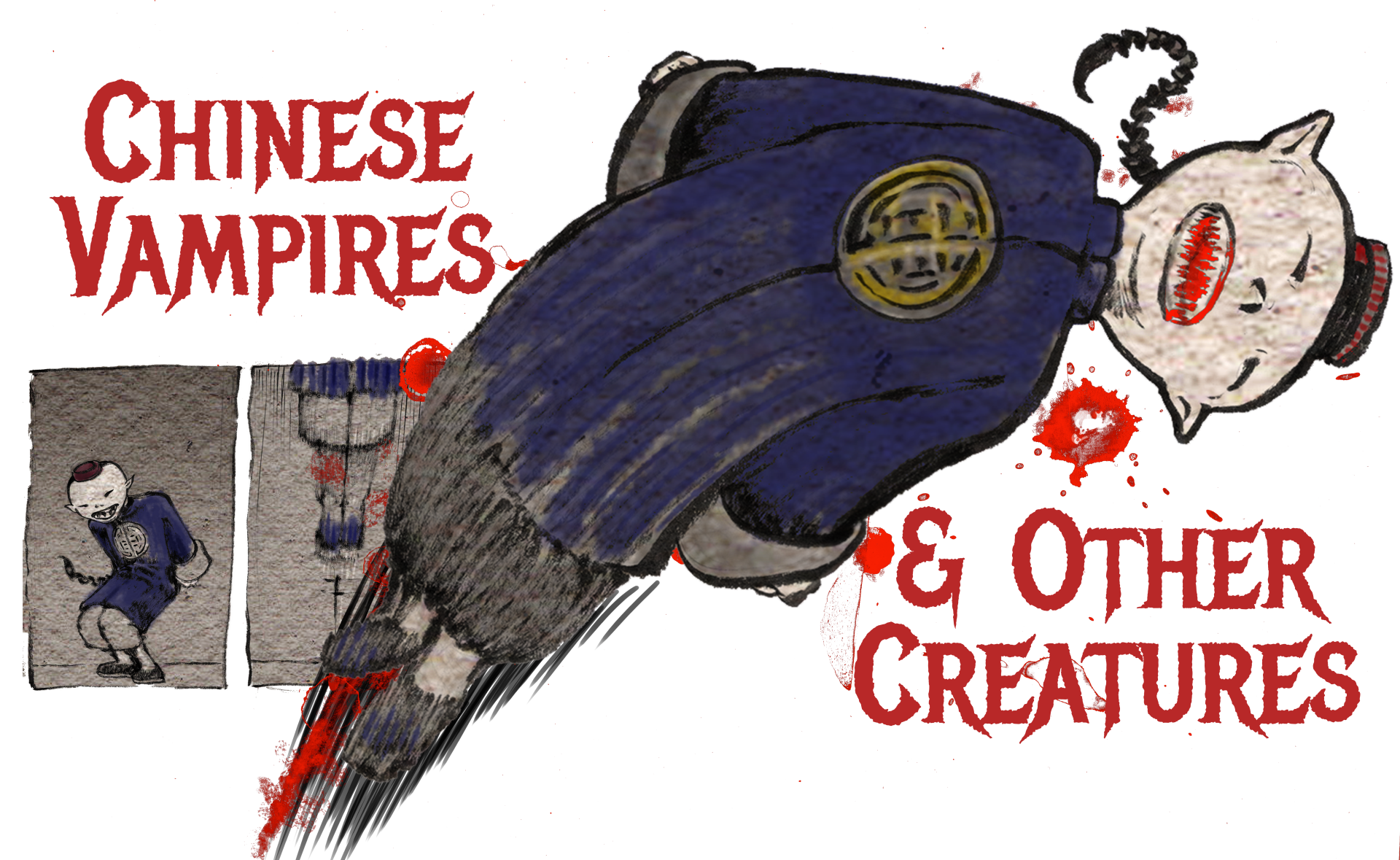The penchant for mascots ranging from Pokémon to Miraitowa (ミライトワ the official mascot of the 2020 Tokyo Summer Olympics) is, in my opinion, a hold-over from the folk influences of yōkai and the Kami of Shinto belief. But the word “yōkai” is a Japanese transliteration or pronunciation of the Chinese term “yaoguai” who involve similarly strange creatures. Both languages use the same Chinese characters 妖怪, to describe them.
Whether you call them yōkai or yaoguai, they represent a broad and diverse class of ambiguous creatures in folklore and mythology across Asia. Defined by the possession of supernatural powers and by having attributes of the weird, the strange or the unnatural. They are especially associated with transformation and enchantment.
The Jiāngshī (殭屍)
PIt’s perhaps Asia’s most iconic undead creature of folklore. Due to the influence of Hong Kong cinema, it is typically depicted as a stiff corpse dressed in the official garments from the Qing dynasty. Although the pronunciation of jiangshi varies in different East Asian countries, all of them refer to the Chinese version of vampire. It is commonly identified by its hopping or leaping. In folkloric accounts it is capable of giving chase by running, and if sufficiently ancient or if it has absorbed sufficient Qi; life energy, it is capable of flight.
Written instances describe them as follows: “jiāngshī came from the hills, soaring through the air, to devour the infants of the people” It is believed that the jiangshiand its representation in the imagination was derived from the tradition of “corpse-driving” a practice involving the repatriation of the corpses of dead laborers and soldiers across the Xiang province to their hometowns for burial in family gravesites. Multiple corpses would be tied to pairs of bamboo poles to be carried on the shoulders of Taoist priests. Working in pairs these corpse-drivers would transport these bodies over thousands of miles to their ancestral villages. These monks often operated at night to avoid panicking crowds during the day, This however served to amplify the fearful associations of their trade and seen from a distance gave the impression of hopping corpses.
The Shuāliǎnguǐ (刷臉鬼)
Mysterious beings who, at first glance, looked and spoke no differently from ordinary people. Sometimes they seemed to arrive as seeds dropped through roof cracks, spinning and expanding until they burst open into human form. People who encountered them would suddenly collapse, their face gone, leaving only the back of their skull. Several of these strange figures carry large wooden barrels with more than a hundred human faces inside, preserved in lime.

The Bai Ze (白澤),
With a tiger’s headed, dragon scales and a crimson mane, the Bai Ze is a rare omen of fortune. In the folk beliefs of imperial China, they symbolized the ability to expel ghosts and ward off evil spirits. Gifted with human speech, it perceives the hearts of all creatures and holds vast knowledge.

Discover more from
Subscribe to get the latest posts sent to your email.
